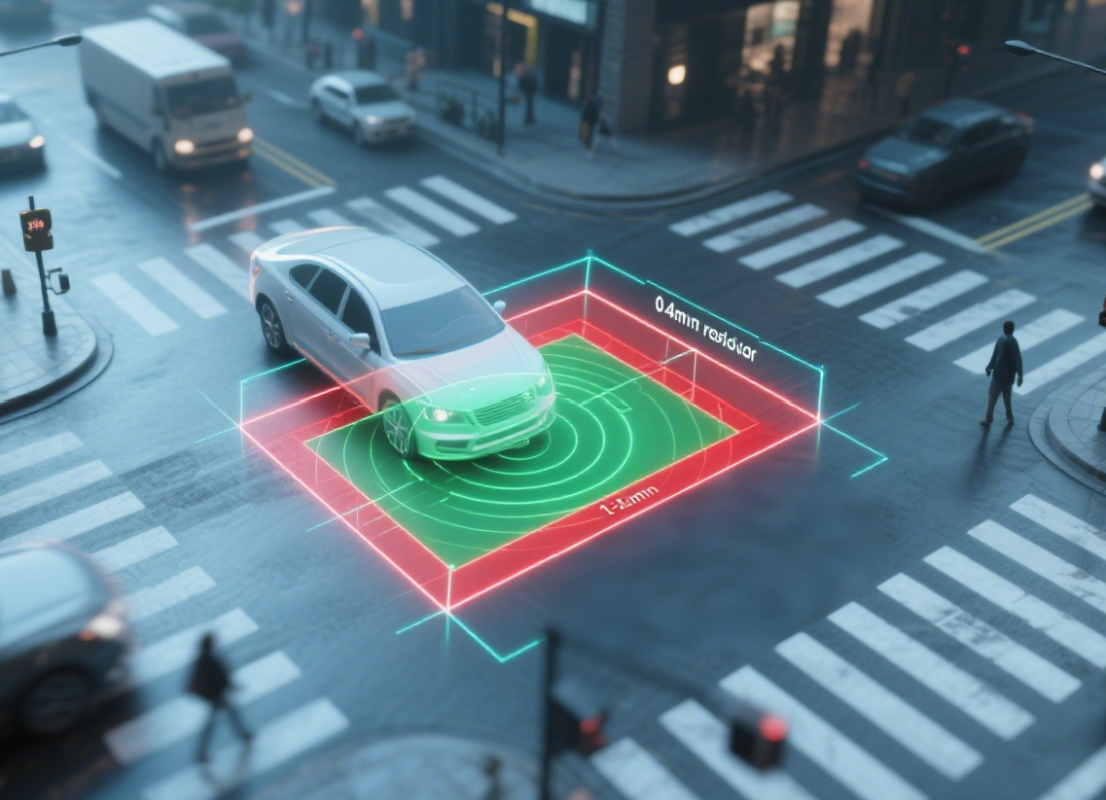Why 0.4m Detection Matters: Eliminating Blind Spots in Smart Traffic with mmWave Radar
In modern intelligent transportation systems (ITS), every centimeter of detection coverage counts. While most radars boast long-range performance, one area remains overlooked yet highly critical: the near-field zone under 1 meter. Traditional sensors often fail to detect pedestrians, bicycles, or scooters at close range, creating blind spots that may result in accidents.
This is where Linpowave’s mmWave radar stands apart. By extending detection sensitivity down to 0.4 meters, it closes the safety gap that many radars leave unaddressed.
The Hidden Risk of Near-Field Blind Spots
Imagine a busy city intersection equipped with traffic lights and automated signal control. Vehicles rely on radar-based detection to “see” objects around them. But what happens when a child steps off the curb within 0.8 meters of the detection zone?
Conventional radars, which usually start detecting at 1–1.5 meters, may completely miss this target. In practice, this means the most vulnerable road users—pedestrians, cyclists, and scooter riders—remain invisible at the most dangerous proximity.
A blind spot of just one meter might sound negligible, but in traffic, that space often determines whether a near-collision becomes a serious accident.
Why 0.4m Detection Is a Breakthrough
Reducing the minimum detection range to 0.4 meters addresses this safety-critical gap. This capability is not just a technical specification—it directly translates into measurable value for smart traffic systems:
-
Pedestrian Safety at Crosswalks
At intersections, pedestrians often gather close to the curb or traffic poles. A radar that only detects beyond 1 meter may miss them until it’s too late. With 0.4m detection, Linpowave radar ensures pedestrians are monitored from the moment they enter the roadway zone. -
Bicycle and E-Scooter Monitoring
Urban mobility trends show an exponential rise in bicycles and e-scooters, which often operate in the near-field zone of vehicles. Enhanced short-range sensing allows traffic systems to differentiate between pedestrians, bicycles, and vehicles with higher accuracy, improving decision-making in adaptive traffic control. -
Vehicle Maneuver Assistance
When vehicles stop at traffic lights, radars often face challenges in detecting nearby motorcycles or cars within close range. Linpowave radar mitigates this risk by tracking objects as close as 0.4m, supporting smoother and safer lane management.
Technology Behind Linpowave’s Near-Field Sensing
Linpowave achieves near-field coverage without compromising long-range performance. Our 77–81 GHz mmWave radar modules deliver:
-
Detection range: 0.4m – 300m (supporting both ultra-near and long-distance coverage)
-
High angular resolution to distinguish objects within crowded intersections
-
Robust anti-interference design suitable for urban environments with high signal noise
-
Compact modular form factor for flexible deployment in roadside units and smart poles
👉 Learn more about our radar boards and technical capabilities on Linpowave’s Radar Solutions.
Deployment Scenarios in Smart Traffic
-
Smart Intersections
With 0.4m coverage, traffic signals gain visibility over pedestrians and two-wheelers standing right next to the curb. This prevents misclassification and improves adaptive traffic light control. -
V2X Communication
Vehicle-to-everything (V2X) systems rely on sensors that capture precise, real-time environmental data. Near-field detection allows vehicles and infrastructure to exchange richer, more reliable safety messages, reducing the chance of collisions. -
Urban Road Safety Zones
In school zones or pedestrian-heavy areas, blind spot elimination is non-negotiable. Linpowave radar’s ability to track targets from 0.4m provides confidence for city planners seeking safer smart city deployments.
Addressing the Industry Gap
Many radar manufacturers emphasize maximum detection distance—boasting ranges of 200m, 300m, or more. While this matters for highways, urban environments demand equal focus on the near-field.
By ignoring the sub-1m detection zone, many systems leave road users vulnerable. Linpowave addresses this gap by balancing both extremes: ultra-near (0.4m) and ultra-far (300m) detection in a single solution.
👉 Explore technical specifications on Linpowave’s V200 Radar Module.
Conclusion: Small Distance, Big Impact
In smart traffic, safety depends not just on how far you can see, but how close. A one-meter blind spot can mean the difference between prevention and tragedy. By pushing the minimum detection range down to 0.4m, Linpowave mmWave radar ensures that no critical object is left unseen.
For traffic authorities, city planners, and ITS integrators, this capability offers a tangible step forward in building safer, smarter, and more reliable transportation ecosystems.
👉 Learn more about our radar technologies and deployment cases at Linpowave Official Website.



